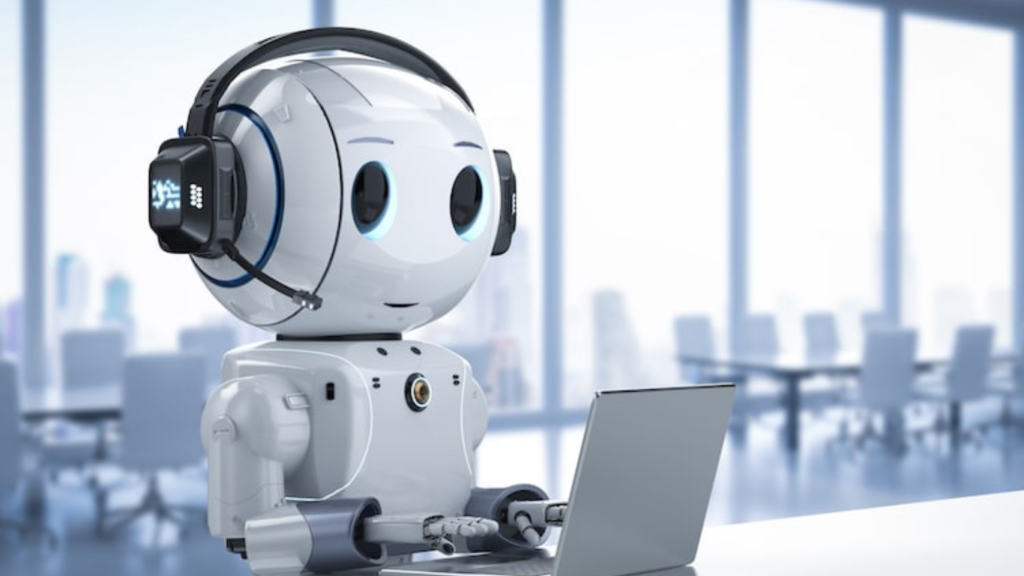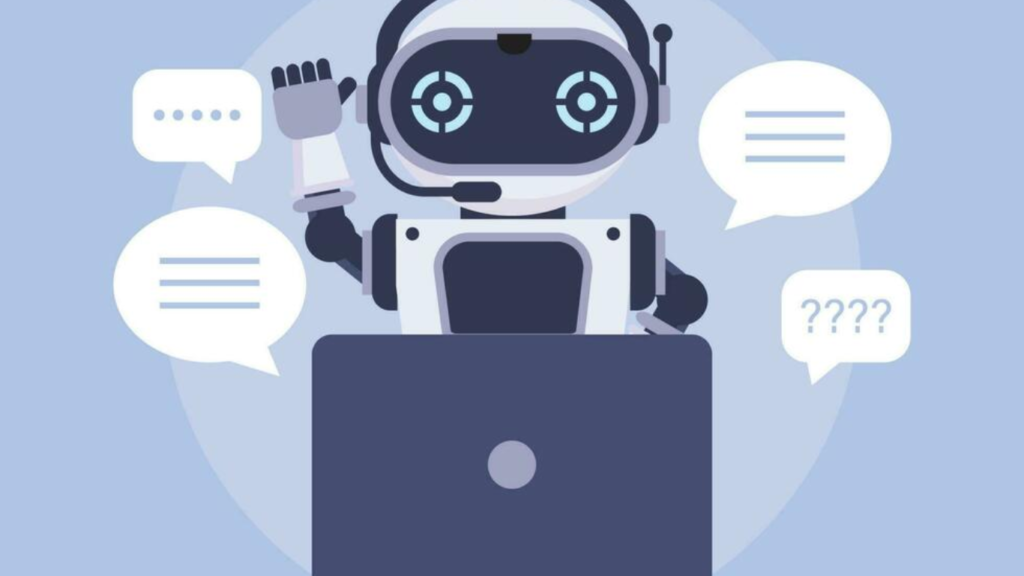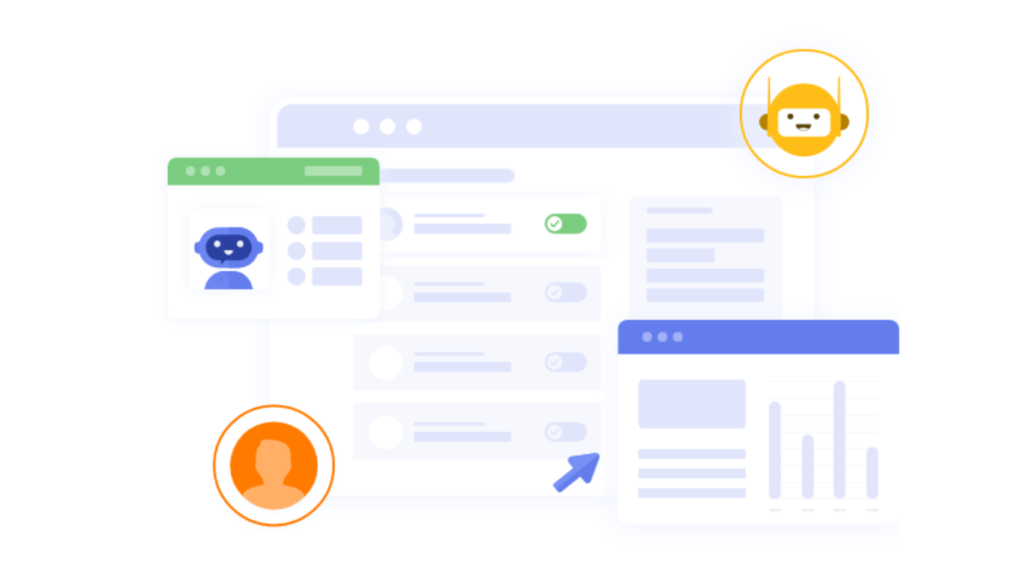Here, you can learn how to create a Chatbot using the techniques of low-code directly in your browser with the easy-to-follow tutorial.
The article provides a short tutorial that helps you build a simple Chatbot using the Microsoft DialoGPT model with Hugging Face and Gradio.
Let’s start reading each topic covered in the title of Build AI Chatbot in 5 minutes with Hugging Face and Gradio.
This article helps beginners build an amazing Chatbot that is very useful for humans using the interference of Gradio, Hugging Face space, and Microsoft.
With all these techniques, you will be able to develop and customize your apps in just 5 minutes using similar techniques.
What is an AI Chatbot:-
An AI chatbot is a software application that mainly uses artificial intelligence to simulate and process human conversation easily. It allows humans to interact with digital systems as if communicating with a real person. Chatbots are typically powered by machine learning models, natural language processing (NLP), and sometimes a system of rule-based. Build Chatbot in 5 minutes with Hugging Face and Gradio
What is Hugging Face?
Hugging Face is an company that has created an open-source platform and library for humans known for contributing to natural language processing (NLP).
What is Gradio?
Gradio is an open-source Python library that simplifies the creation of user interfaces for machine learning models. It allows developers to quickly create web-based interfaces to interact with their models.

Build AI Chatbot in 5 minutes with Hugging Face and Gradio:-
With the help of Hugging Face and Gradio, you can easily build an Chatbot.
Here, are step-by-step guides for beginners to build an Chatbot using pre-trained models like Hugging Face and Gradio.
->Step 1- Set up your Environment- firstly, you have to install Python in your system and then create a virtual environment to build an Chatbot after installing Python install the required libraries for set up.
->Step 2- Load a Pre-trained Model from Hugging Face- here, you can easily use a model of pre-trained that helps you to load a pre-trained model like DialoGPT from the model hub of Hugging Face.
->Step 3- Create the Chatbot Function- you can create the functions for the Chatbot to work properly according to the demand of users. It helps to define the function to handle the input of the user and then pass it to the model after all these they return the responses.
->Step 4- Create the Gradio Interface- this helps to create a good interface for the Chatbot using Gradio.
->Step 5- Run Your Application- after completing all the steps you can save your script as “app.py” and run it. With the help of an Chatbot interface, you can open a web page and start a local web server. You can easily interact with Chatbot by typing in the input box and seeing the responses.

Key Features of AI Chatbots:-
- Natural Language Processing (NLP)
- Understanding: chatbots can comprehend the input given by users in natural language.
- Generating: They can generate responses that are coherent and contextually relevant.
- Machine Learning
- chatbots use machine learning algorithms to improve their responses over time by learning from past interactions.
- Contextual Awareness
- They can maintain context within a conversation, making interactions more coherent and human-like.
- Integration
- chatbots can be integrated into various platforms such as websites, mobile apps, messaging apps (e.g., Facebook Messenger, WhatsApp), and customer service portals.
- Multitasking
- They can handle multiple users simultaneously, providing instant responses.
- Personalization
- chatbots can personalize responses based on user data and past interactions.
Types of AI Chatbots:-
- Rule-Based Chatbots
- Operate on a set of predefined rules and responses. They are relatively simple and can only handle specific queries.
- AI-Powered Chatbots
- Use advanced AI technologies like NLP and machine learning. They can handle more complex queries and learn over time.
- Hybrid Chatbots
- Combine rule-based and AI-powered approaches to balance simplicity and complexity.
Use Cases of AI Chatbots:-
- Customer Support
- Provide instant responses to customer queries, resolve common issues, and escalate complex problems to human agents.
- E-commerce
- Assist users in finding products, processing orders, providing recommendations, and handling returns.
- Healthcare
- Schedule appointments, provide medical information, and offer preliminary diagnoses based on symptoms.
- Finance
- Answer questions about account balances, and transaction histories, and provide financial advice.
- Education
- Assist with tutoring, answering questions about course material, and providing study resources.
- Entertainment
- Engage users with interactive stories, games, and other forms of entertainment.

Benefits of AI Chatbots:-
- 24/7 Availability
- Chatbots provide around-the-clock support without the need for human intervention.
- Cost Efficiency
- Reduce operational costs by automating repetitive tasks and handling multiple queries simultaneously.
- Scalability
- Easily scale to handle increasing volumes of queries without additional resources.
- Improved User Experience
- Provide quick and consistent responses, enhancing user satisfaction.
- Data Collection
- Collect valuable data on user preferences and behavior, which can be used for further improvements and personalization.
Challenges of AI Chatbots:-
- Understanding Complex Queries
- May struggle with understanding nuanced language, slang, or highly specific queries.
- Maintaining Context
- Maintaining context over long conversations or multiple interactions can be challenging.
- Personalization
- Requires access to user data and proper handling of privacy concerns.
- Handling Errors
- Ensuring graceful error handling and providing useful responses when the chatbot does not understand a query.
Conclusion:-
AI chatbots are powerful tools that leverage artificial intelligence to provide interactive and efficient communication between humans and digital systems. Their applications span various industries, offering benefits such as 24/7 availability, cost efficiency, and improved user experience. Despite some challenges, advancements in AI and NLP continue to enhance the capabilities and effectiveness of chatbots.
The Hugging Face ecosystem includes:-
- It includes the Transformers Library.
- It has a Datasets Library.
- Model Hub.
- It also has Tokenizers Library.
- Involvement in Research and Community.

The Key features of Gradio include:-
- It is easy to use for beginners.
- Best for quickly prototyping and testing models with a user-friendly interface.
- It allows the user to take live demos.
- It supports real-time interaction with the user.
- It provides customization interfaces to match the requirements of different projects.
- It simplifies the process of deployment for web applications.
- Gradio can be locally hosted and shared with others through a URL.
Combining Hugging Face and Gradio:-
By combining Hugging Face and Gradio, developers can leverage the powerful pre-trained models from Hugging Face’s Transformers library and create interactive web applications with Gradio. This combination allows for rapid development, testing, and deployment of AI applications with minimal effort. Here’s an example workflow:
- Load a Pre-trained Model: Use Hugging Face’s Transformers library to load a pre-trained model.
- Define the Interface: Use Gradio to define the input and output interface for interacting with the model.
- Create the Application: Integrate the model with the Gradio interface to create a web application.
- Deploy and Share: Deploy the application locally or on the cloud, and share it with users for interaction.
Example Recap
In the provided example, we created a chatbot using the DialoGPT model from Hugging Face and a simple Gradio interface. The steps included:
- Loading the Model: Using Hugging Face’s Transformers library to load a pre-trained chatbot model.
- Defining the Response Function: Creating a function that generates responses based on user input.
- Creating the Interface: Setting up a Gradio interface to capture user input and display the chatbot’s responses.
- Launching the Application: Running the Gradio interface to interact with the chatbot in real time.

Final Thoughts:-
The combination of Hugging Face and Gradio empowers developers to quickly create and deploy sophisticated AI chatbots with minimal effort. This capability opens up numerous possibilities for enhancing customer service, automating interactions, and creating engaging user experiences across various domains. By leveraging these powerful tools, you can bring your AI chatbot ideas to life efficiently and effectively.https://www.kdnuggets.com/2023/06/build-ai-chatbot-5-minutes-hugging-face-gradio.html

